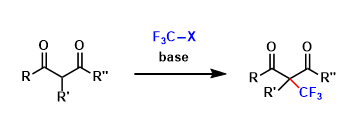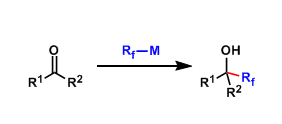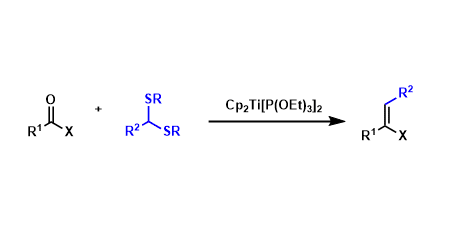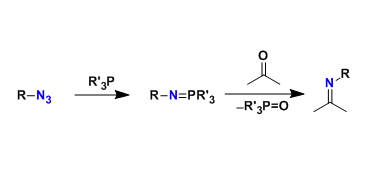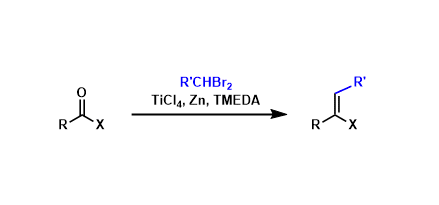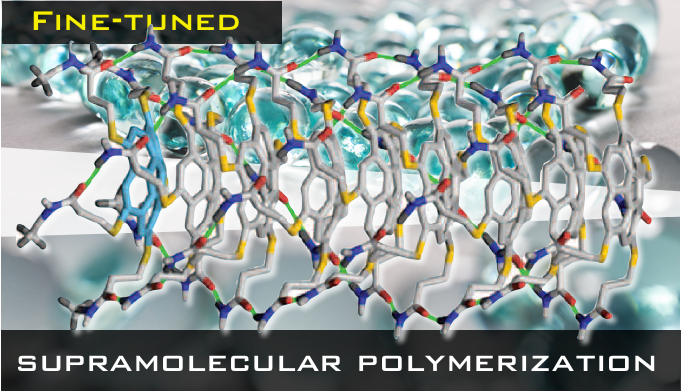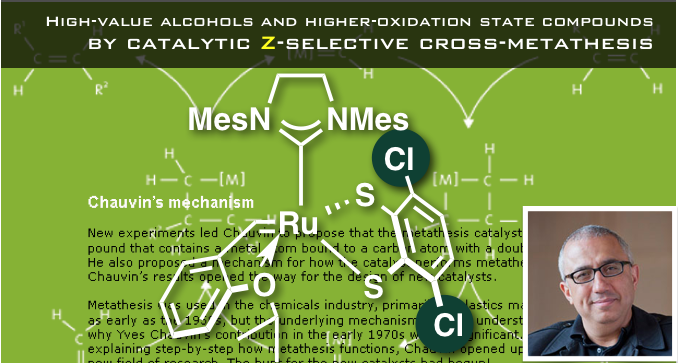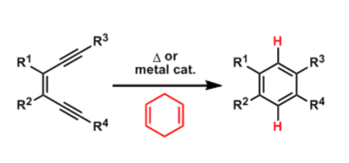General Characteristics Aromatic halides can be trifluoromethylated by copper-catalyzed cross coupling developed by Amii. This procedure is applicable to the introduction of other perfluoroalkyl ...
Author Archive
Electrophilic Trifluoromethylation
General Characteristics Fluorine and hydrogen are about the same size, but are electronically very different. The substitution of hydrogen atoms with fluorine atoms is a common way of tuning the ...
Nucleophilic Fluoroalkylation
General Characteristics When one wants to introduce perfluoroalkyl groups onto carbonyl groups by nucleophilic addition, she/he needs fluorine-containing organometallic reagents. However, these ...
Takeda Olefination
General Characteristics The olefination of thioacetals via generation of organotitanium intermediates using divalent titanocene reagents is known as the Takeda olefination. The titanocene reagent ...
Aza-Wittig Reaction
General Characteristics Nucleophilic phosphorus reagents such as triphenylphosphine react with azides to generate, via the Staudinger reaction, N-P ylide (iminophosphorane) intermediates, which react ...
Takai-Lombardo Reaction
General Characteristics In the Takai olefination, carbonyl compounds are olefinated using organotitanium reagents derived from gem-dihaloalkanes. Whereas most of other olefination reactions are ...
Fine-tuned Supramolecular Polymerization
A class of polymeric materials called supramolecular polymers is drawing an attention in recently years. In contrast to “conventional” polymers, which consist of covalently linked monomeric units, ...
The Progress of Olefin Metathesis: Can It Handle Every Functional Group Now?
In January 2015, Yves Chauvin, the French chemist who was the first to propose the reaction mechanism of olefin metathesis, passed away. For his contribution, he shared the Nobel Prize in Chemistry ...
Benzoin Condensation
General Characteristics In the presence of nucleophilic catalysts such as cyanide, aromatic aldehydes dimerize to form products called benzoins. Benzoin derivatives are important intermediates for ...
Masamune-Bergman Reaction
General Characteristics When heated at above 200 °C, cis-1,5-hexadiyne-3-ene cyclizes to form 1,4-benzene biradical. The highly reactive biradical species becomes benzene in the presence of hydrogen ...


